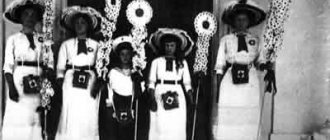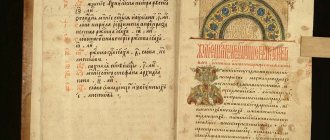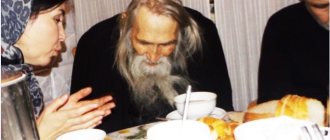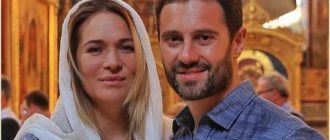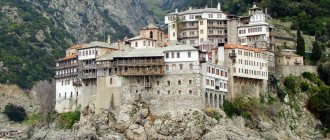Throughout its two centuries of existence, the Christian Church has proven its faithfulness to God. The best proof is human life. Neither theological works, nor beautiful sermons, nothing proves the truth of religion more than a person who is ready to give his life for its sake.
Living in the modern world, where everyone can freely profess their faith and express their opinion, it is difficult to imagine that just a hundred years ago this could lead to execution. The 20th century left a bloody trail in the history of Russia and the Russian Church that will never be forgotten and will forever remain an example of what the state’s attempt to gain total control over society can lead to. Thousands of people were killed simply because their faith was not acceptable to the authorities.
Who are the New Martyrs and Confessors of Russia
The main Christian denomination of the Russian Empire is Orthodoxy. After the 1917 revolution, members of the faith were among those subjected to communist repression. It was from these people that the host of saints subsequently came, which is a treasure for the Orthodox Church.
Origin of words
The word "martyr" is of ancient Greek origin (μάρτυς, μάρτῠρος) and is translated as "witness". Martyrs have been revered as saints since the beginning of Christianity. These people were firm in their faith and did not want to renounce it even at the cost of their own lives. The first Christian martyr was killed around 33-36 (First Martyr Stephen).
Confessors (Greek: ὁμολογητής) are those people who openly confess, that is, testify to their faith even in the most difficult times, when this faith is prohibited by the state or does not correspond to the religious belief of the majority. They are also revered as saints.
Meaning of the concept
Those Christians who were killed in the 20th century during political repression are called new martyrs and confessors of Russia.
The martyrdom is divided into several categories:
- Martyrs are Christians who gave their lives for Christ.
- New martyrs (new martyrs) are people who suffered for their faith relatively recently.
- Hieromartyr - a person in the priestly rank who accepted martyrdom.
- A venerable martyr is a monk who accepted martyrdom.
- A great martyr is a martyr of high birth or rank who has endured great torment.
For Christians, accepting martyrdom is a joy, because by dying, they are resurrected for eternal life.
LIST OF ABBREVIATIONS
AMP Archive of the Moscow Patriarchate
GAKO State Archive of the Kostroma Region
GARF State Archives of the Russian Federation
OR RSL Department of Manuscripts of the Russian State Library
PSTBI Orthodox St. Tikhon's Theological Institute
RGALI Russian State Archive of Literature and Art
RGIA Russian State Historical Archive
Central Archive of the FSB Central Archive of the FSB
TsGAMO Central State Archive of the Moscow Region CIAM Central Historical Archive of Moscow TsMAM Central Municipal Archive of Moscow
New Martyrs of Russia
After the Bolsheviks came to power, their main goal was to preserve it and eliminate their enemies. They considered enemies not only to structures directly aimed at overthrowing Soviet power (the White Army, popular uprisings, etc.), but also to people who did not share their ideology. Since Marxism-Leninism presupposed atheism and materialism, the Orthodox Church, as the largest, immediately became their opponent.
Historical reference
Since the clergy had authority among the people, they could, as the Bolsheviks thought, incite the people to overthrow the government, and therefore pose a threat to them. Immediately after the October uprising, persecution began. Since the Bolsheviks were not completely strengthened and did not want their government to look totalitarian, the elimination of representatives of the Church was not determined by their religious beliefs, but was presented as punishment for “counter-revolutionary activities” or for other fictitious violations. The wording was sometimes absurd, for example: “he delayed the church service in order to disrupt field work on the collective farm” or “he deliberately kept small silver coins in his possession, with the goal of undermining the correct circulation of money.”
The rage and cruelty with which innocent people were killed sometimes exceeded that of the Roman persecutors in the first centuries.
Here are just a few such examples:
- Bishop Feofan of Solikamsk was stripped in front of the people in the bitter cold, tied a stick to his hair and lowered into an ice hole until he was covered with ice;
- Bishop Isidore Mikhailovsky was impaled;
- Bishop Ambrose of Serapul was tied to the tail of a horse and allowed to gallop.
But most often, mass execution was used, and the dead were buried in mass graves. Such graves are still being discovered today.
One of the places for execution was the Butovo training ground. 20,765 people were killed there, 940 of them were clergy and laity of the Russian Church.
List
It is impossible to list the entire council of new martyrs and confessors of the Russian Church. According to some estimates, by 1941, about 130 thousand clergy were killed. By 2006, 1,701 people had been canonized.
This is just a small list of martyrs who suffered for the Orthodox faith:
- Hieromartyr Ivan (Kochurov) - the first of the murdered priests. Born July 13, 1871. He served in the USA and conducted missionary activities. In 1907 he moved back to Russia. In 1916 he was appointed to serve in the Catherine Cathedral of Tsarskoye Selo. On November 8, 1917, he died after prolonged beatings and dragging along railroad sleepers.
- Hieromartyr Vladimir (Epiphany) - the first of the murdered bishops. Born January 1, 1848. Was Metropolitan of Kyiv. On January 29, 1928, while in his quarters, he was taken out by sailors and killed.
- Hieromartyr Pavel (Felitsyn) was born in 1894. He served in the village of Leonovo, Rostokinsky district. He was arrested on November 15, 1937. Accused of anti-Soviet agitation. On December 5, he was sentenced to 10 years of work in a forced labor camp, where he died on January 17, 1941.
- Reverend Martyr Theodosius (Bobkov) was born on February 7, 1874. His last place of service was the Church of the Nativity of the Virgin Mary in the village of Vikhorna, Mikhnevsky district. On January 29, 1938 he was arrested and executed on February 17.
- Hieromartyr Alexy (Zinoviev) was born on March 1, 1879. On August 24, 1937, Father Alexy was arrested and imprisoned in the Taganskaya prison in Moscow. He was accused of holding services in people's homes and conducting anti-Soviet conversations. On September 15, 1937 he was shot.
It should be noted that during interrogations they often did not admit to what they did not do. They usually said that they were not involved in any anti-Soviet activities, but this did not matter because the interrogations were purely formal.
Speaking about the martyrs of the 20th century, one cannot fail to mention St. Tikhon, Patriarch of Moscow (January 19, 1865 - March 23, 1925). He is not glorified among the martyrs, but his life was a martyr because the patriarchal service fell on his shoulders in these difficult and bloody years. His life was full of difficulties and suffering, the greatest of which was knowing that the Church entrusted to you was being destroyed.
The family of Emperor Nicholas is also not canonized as martyrs, but for their faith and dignified acceptance of death, the Church honors them as holy passion-bearers.
How to paint images of monks?
Now, when depicting hieromonks, abbots, and archimandrites, they are most often depicted in full liturgical vestments, emphasizing their rank. In the ancient tradition, it’s the other way around: a monk, no matter whether he is ordained or not, was always depicted in monastic robes. First of all, he is a monk. This is how they wrote, as already stated earlier, even some bishops, not to mention hierodeacons and hieromonks. Although there are some exceptions, when priest-monks were depicted in liturgical vestments, like the Venerable Theodore the Studite and Marcian. However, the traditional norm is more consistent with the image of presbyter-monks in monastic robes.
Cathedral of Saints of the Moscow Theological Academy
Regarding the depiction of holy monks, another question arises: now monasticism is divided into degrees (monastics, mantle monks (minor schema), great schema monks) - how to display this when writing? Moreover, among the venerable martyrs of the 20th century there are even novices. How to take this into account when painting an icon? There are different approaches. One approach: to depict the saint in exactly the clothes that he wore during his earthly life. For example, we know that the saint was tonsured into the minor schema, which means that they write in his mantle. And if he was a great schema-monk, they write a schema. If a monk, he is depicted on the icon in a cassock. If the novice is still a question for research: how was he dressed? Maybe he only wore a cassock? But another approach is also possible: regardless of how the saint was dressed, they write him in full monastic vestments - since he was already numbered among the ranks of monastics. This approach is also possible. Ancient icon painters turned to it more often. But now, probably, this will not always be appropriate, since historical knowledge about saints today is quite developed and such a discrepancy may confuse someone. And if so, then it is better to avoid such reasons and write according to known data. Still, the icon painter must take into account the realities of perception: the image must be combined with the prototype. Not to cause rejection, but to help establish contact, promote prayerful communication with the saint.
For example, when painting the image of the Venerable Martyr Elizabeth, it is taken into account that the Martha and Mary Convent was special; the abbess and sisters wore predominantly white vestments, although artistically white vestments can rarely be depicted beautifully. Therefore, as a rule, some additional color or shade is introduced to make the image more convincing.
Hieromartyr Joasaph with his life, Dubna
Day of Remembrance of the New Martyrs and Confessors of Russia
Even at the bishops' council of 1817-1818. decided to commemorate all the deceased who suffered in persecution. But at that time they could not canonize anyone.
The Russian Orthodox Church Abroad was the first to take a step towards their glorification on November 1, 1981, and set the date of celebration on February 7, if this day coincides with a resurrection, if not, then on the next Sunday. In Russia, their glorification took place at the Council of Bishops in 2000.
Celebration traditions
The Orthodox Church celebrates all its holidays with the Holy Liturgy. On the day of the celebration of St. This is especially symbolic of martyrs because during the Liturgy the sacrifice of Christ is experienced, and at the same time the sacrifice of the martyrs who gave their lives for Him and for the holy Orthodox faith is remembered.
On this day, Orthodox Christians remember with bitterness those tragic events when the Russian land was soaked in blood. But the consolation for them is that the 20th century left the Russian Church with thousands of holy prayer books and intercessors. And when they are asked who the new martyrs are, they can simply show old photographs of their relatives who died in persecution.
The ahistorical nature of the icon
There is a problem: should an icon be historically accurate, especially in its details? For example, ancient bishops did not wear either a panagia or a cross during divine services. In ancient images we always see St. Nicholas without them. The tradition of wearing crosses and panagias developed in the relatively late Middle Ages, and was widespread in recent centuries. Crosses appeared among the priesthood even later: among archimandrites at the end of the Middle Ages, and among parish priests already in the synodal period from the end of the 18th–19th centuries. Question: should we depict panagias and crosses as saints or not? Both approaches are possible: some believe that it is important to correspond to historical realities, others believe that the main thing is to create an image of a saint that is close to the perception of a contemporary, without going into details.
Hieromartyr Nikita, Pereslavl-Zalessky
The icon is in a sense ahistorical. Let us remember the icons of St. Spyridon of Trimythous: he is depicted in full episcopal vestments and with a shepherd’s cap on his head, which, of course, he did not wear in full vestments. But for the church tradition it was important to emphasize the humility and meekness that was deeply inherent in him, and also to show that he, already a bishop, remained a shepherd of dumb sheep. On the icon you can often find such “oddities” from the point of view of historical truth or the properties of linearity of time. For example, one mark on the icon of St. John Chrysostom may contain two of his figures at once - this emphasizes the numerousness and tirelessness of his care for the needs of his flock.
Let us remember the icons of church holidays, for example Pentecost. It depicts the descent of the Holy Spirit on the apostles, and always among the host of the apostles are Saints Paul, Mark and Luke. Moreover, it is known that they, at least the Apostle Paul, were not there at this historical moment of the birth of the Church of Christ and the descent of the Holy Spirit on the apostles. The Apostle Paul was not yet a Christian at all. But how can an icon show the Apostolic Church, which receives the Holy Spirit to enlighten us and the entire universe, without the supreme “apostle of the tongues” (nations) Paul and without the evangelist apostles of the 70 Mark and Luke? This is impossible. That is why they are depicted on the icon of the Feast of Pentecost, although from a historical point of view this is incorrect.
Even an icon of Christ can be perceived by someone literally, as a portrait, but the historian will always understand what is brought into the image by the rules of iconography. Christ, for example, extremely rarely held a scroll in his hands - only in synagogues, when the scroll of the Holy Scriptures was unrolled and He read aloud (see: Luke 4:16-21). However, Christ is often depicted on icons with a codex - a book - despite the fact that there were no books at all in those days. But the point is not historical accuracy; the icon reflects spiritual reality in images accessible to our perception.
Cathedrals of Saints
The image of the cathedrals of saints is important - these can be the cathedrals of Moscow, Perm, Ryazan, Penza and other lands, the cathedrals of the new martyrs of these lands. This is simply necessary in the event of establishing a day of remembrance for the cathedral. A city cathedral can also be written separately, so that every believer in the city, for example, can say: “Here in our city such and such saints labored!” This is the property of the citizens of this city. When there is an icon of holy fellow countrymen, it inspires. This is a kind of holy immortal regiment of the area - the history of our family, our city.
They also write cathedrals of saints, for example, the Moscow Theological Academy, St. Petersburg, etc. There is even a cathedral of saints at Moscow State University. This gives a completely different feeling, a color of experience just from being within these walls where the saints studied.
